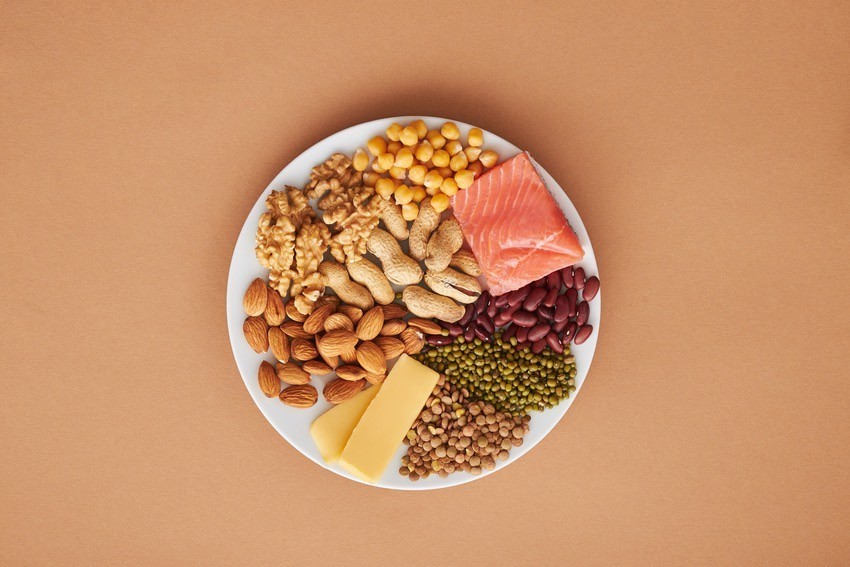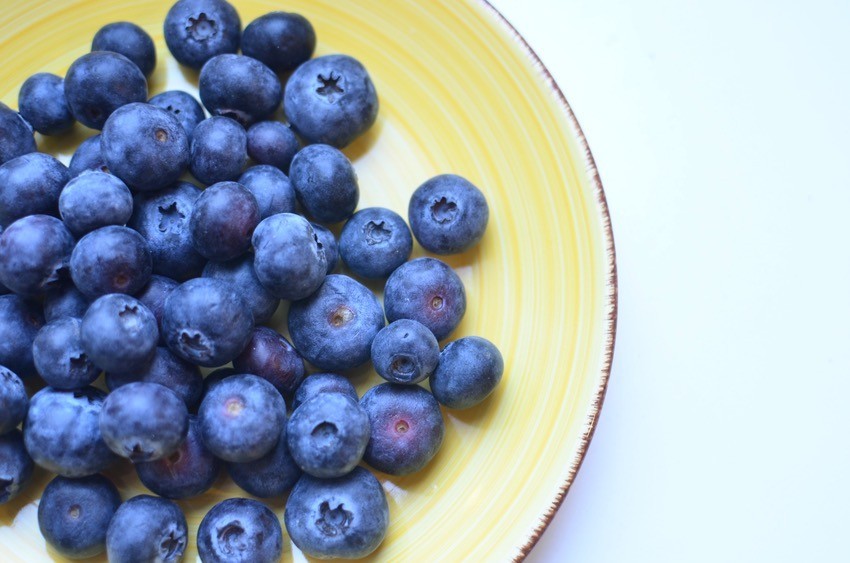As we welcome a new month, we’d also like to introduce our expert Nutritionist & Recipe Creator, Clementine Rose. A registered Nutritional Therapist and member of BANT (British Association for Applied Nutrition and Nutritional Therapy), Clemmie is passionate about gut health foods and believes in the healing power of nutrition.
With many of us today understanding the importance of our gut, that is often dubbed as our ‘second brain’, here is Clemmie’s expert guide to your insides…
‘Gut health’ is the buzzword at the moment: and it’s about time. Finally, we’ve perked up to the vital role our gut plays throughout several of our bodily systems, and most recently our minds.
We are still, however, only at the beginning of this discovery. Helping you to get your head around it, here’s my guide to your gut health foods– let’s gut down to it!
Before we get started, let’s talk about Mindful Eating.
Table of Contents
Mindful Eating
In today’s modern world, life is busier than ever and that can cause an impact on our health and wellbeing. Snacks and lunches have become all about convenience.
The problem?
With convenience comes with making poorer food choices. The grab and go mentality means that most of your time, you won’t pay attention to the food choices and decisions you are making.
This is where practising mindfulness can play a key part in helping you make better decisions. According to a study from the University of Illinois, paying attention to what you’re eating may help reduce your overall caloric intake.
As well as paying attention to our choices there is the importance of paying attention to when we are actually feeling full.
Helping us to notice this can help us lose weight and develop a healthier relationship with food.
Guide to your Gut Health

‘Gut health’ is the buzzword at the moment: and it’s about time.
Let’s start with the basics…
So what is the gut?
The gut is the gateway to your insides. Supported by the liver, the stomach, the gallbladder and the pancreas are the ‘backing singers’ to the band (the band being the gut).
Each of these elements is involved in every stage of digestion, an incredibly complex and mind-blowing process which many of us take for granted!
And the gut microbiome?
These are tiny living things that live in our gut, that are too small to be seen by the naked eye. There are a lot of them, trillions in fact.
I like to think of the gut as a tropical rainforest, hosting a variety of plants, animals and insects, all living in harmony (hopefully!) with each other and thriving off different foods.
The gut microbiome isn’t only made up of bacteria but also fungi, viruses, yeast and other organisms, like parasites which are in constant flux.
These are known as our gut ‘microbiota’ – the whole community of micro-organisms that inhabit our gut. Some come and go, some stay all the time, colonising the gut but varying in numbers according to foods eaten.
Why is our microbiota so important?
Your gut microbiota sits at the centre of a complex web of cables that connect all systems in the body, including your nervous system, your immune system, your cardiovascular system, and even your skin.
It is now pretty evident that our gut microbiota has a huge impact on our overall health and wellbeing!
Recent studies suggest how the types of micro-organisms that inhabit our guts may be affected by certain medical conditions such as irritable bowel syndrome (IBS), type 2 diabetes and chronic fatigue syndrome.
In fact, some conditions, including Crohn’s disease and Ulcerative Colitis, are characterised by reduced microbial diversity.
What influences our microbes?
Our microbes can be influenced by a whole host of external factors such as how we were born (natural birth or C-section), our genetics, age, lifestyle, medication, exercise, where we live, our stress levels and of course, our diets.
Some of these things are beyond our control, but there are several factors we can adjust to make some really positive changes.

Your gut microbiota sits at the centre of a complex web of cables that connect all systems in the body, including your nervous system, your immune system, your cardiovascular system, and even your skin.
Let’s gut to the chase:
what can I eat to keep my microbiome in good shape?
POLYPHENOLS
This is a natural chemical found in some plant-based food from fruit (particularly dark berries) and vegetables to coffee, dark chocolate, beans, nuts and even red wine (wahoo!).
Polyphenols are like our microbes’ life coaches – helping them to be their best selves by making them more efficient. Consuming a variety of polyphenols is key.
Why variety is key….
As we move back to the tropical rainforest analogy, having lower microbial diversity could be seen as a rainforest that inhabits a couple of different plants and one or two animal species.
They could be healthy, but there would be little going on. It would therefore be unlikely to attract a variety of insects, birds or other animals wanting to live in it which would mean the rainforest would struggle to develop and thrive.
When the microbial diversity of your gut is low, a narrower spectrum of beneficial substances, like short-chain fatty acids are produced. These are molecules that your gut bacteria produce when you eat fibre-rich food.
Current research shows that we need closer to 30 different types of plant-based foods a week, this also includes whole grains, pulses, legumes, nuts and seeds.
This sounds like a pretty high number to reach but it is absolutely possible. Here are a few of my top tips:
- Eat the rainbow: fill your plate with colours, make it a work of art.
- Try a new plant-based food each week.
- Order a veg box (Riverford or Oddbox are my fave).
- Fill your freezer with frozen veg and berries to top up your variety score – hello smoothies.
- Buy or make up a nut or seed mix and add to salads, soups and veggies (you can buy seeds mixes in most supermarkets).
- Go for a mixed bag of salad instead.
- Add herbs and spices to every meal.
PRE AND PROBIOTICS
Sound the same, but don’t let that fool you. We need BOTH for a happy gut.
Let’s keep it simple:
Probiotics = live bacteria found in:
- Live yoghurt (a simple swap from plain yoghurt)
- Kefir, Kombucha, Kimchi
- Sauerkraut (cheap and easy to make!)
- Miso
- Tempeh
- Sourdough bread
- Probiotic supplements
Prebiotics = food for bacteria
- Apples
- Artichokes
- Asparagus
- Bananas
- Barley
- Berries
- Chicory
- Cocoa
Fill up that glass! (with water…)
Upping your fluid intake could help ‘get things moving. If your stools are sitting around in your large intestine, unable to pass, your beneficial gut microbes are not going to enjoy their company. Aim for 1.5L per day.
Cut down on artificial sweeteners & processed food. Instead, stick to recommended gut health foods.
One of the simplest ways of improving new gut health food is easier than you’d think. Simply reduce or cut out the use of artificial sweeteners and emulsifiers.
These can potentially diminish microbial diversity, as well as increase intestinal inflammation and contribute to the development of metabolic syndrome. If something is extending a food’s shelf life by months, it probably isn’t doing great things for the living things in our bodies, right?
So, try and cut them down as much as you can and make some simple swaps, so you don’t feel you’re missing out!

Exercise has been shown to increase your microbial diversity and is key to maintaining a healthy gut.
Get moving!
Exercise has been shown to increase your microbial diversity and is key to maintaining a healthy gut.
This doesn’t mean hours in the gym, moving more will also help such as taking the stairs, walking to the shops instead of driving and even standing up and having a little walk around when you’re on the phone – all those incremental steps add up, which is excellent news for your gut microbes.
Chillax…
Easier said than done, I know. But the gut-brain connection is no joke. Stress, anxiety and depression can have a direct effect on your microbiome and how well your gut works and vice versa!
Try swapping ten minutes of scrolling for ten minutes of guided meditation, reading a book or listening to music.
And finally:
Treating every meal as an opportunity to improve our health. Choosing gut health foods and being armed with information on how we can transform our lives through food is pretty incredible.
However, my advice is to do so without obsessing, because life is too short not to enjoy the food you love. Eating is good for the soul and is part of what being human is all about.
If you want to take your gut health to the next level, you could think about sending off for a stool sample via a nutritionist like myself.
This will provide you with information about your own gut flora and bacterial individuality which will allow you to create a more precise plan of action tailored to you.

This recipe is not only delicious but it’s like giving your gut a big ‘ol hug.
MY GUT LUVIN’ RECIPE:
THE GUT HEALTH FOODS OF FOODS: A BERRY GOOD SMOOTHIE BOWL
This recipe is not only delicious but it’s like giving your gut a big ‘ol hug. It’s packed full of gut goodies to encourage a healthy gut microbiome and the berries also offer a dose of antioxidants which help to reduce inflammation among many other benefits.
Sourdough bread contains complex carbohydrates and therefore provides a slower release of energy compared to white bread, and due to the fermentation process sourdough bread goes through, it can be easier to digest meaning it makes it into our list of the ideal gut health foods.
INGREDIENTS:
- 1 x handful of mixed frozen berries
- 1 x (green) banana
- 3 x tbsp natural, live yoghurt
- 2 x tsp chia seeds
- 1 x drop of vanilla essence
METHOD:
Simply blend all the ingredients together, pop into a bowl and decorate with pretty, colourful toppings! Alternatively, for that slow energy release try it on a slice of sourdough bread with a thin spreading of dark, chocolate spread – yum!
GUT HEALTHY TOPPINGS:
Dark berries
Desiccated coconut
Nuts & Seeds
Fresh Herb

Alternatively, for that slow energy release try it on a slice of sourdough bread with a thin spreading of dark, chocolate spread – yum!
Lastly, here are some of my favourite gut boosting brands for you to try:
Probiotics – Symprove:
symprove.com
IG: @symproveyourlife
Live yoghurt – Yeo Valley:
www.yeovalley.co.uk
IG: @yeovalley
Kombucha – Remedy Raw:
www.remedydrinks.com
IG: @remedydrinks
Guided meditation – Calm App:
app.www.calm.com/meditate
IG: @calm
Veg boxes –
Riverford:
www.riverford.co.uk
IG: @riverford
Oddbox:
www.oddbox.co.uk
IG: @oddboxldn
Milled Mixed seeds – Yum & Yay:

 Nutritionist & Recipe Creator
Nutritionist & Recipe Creator